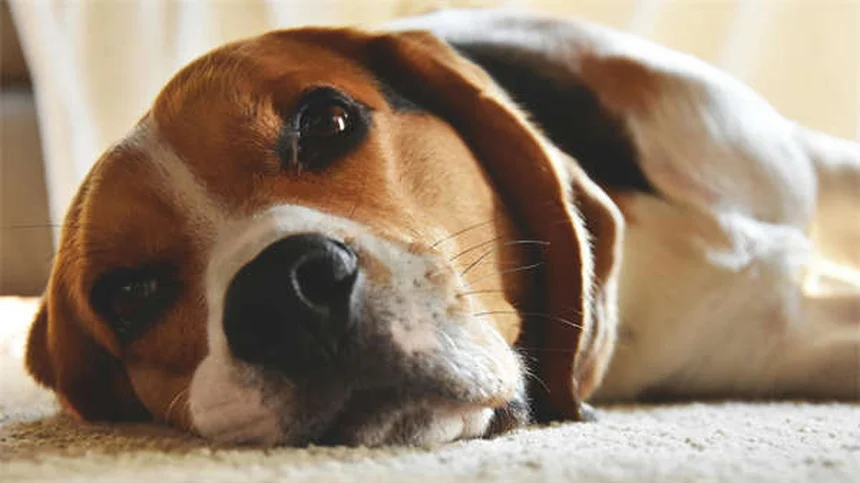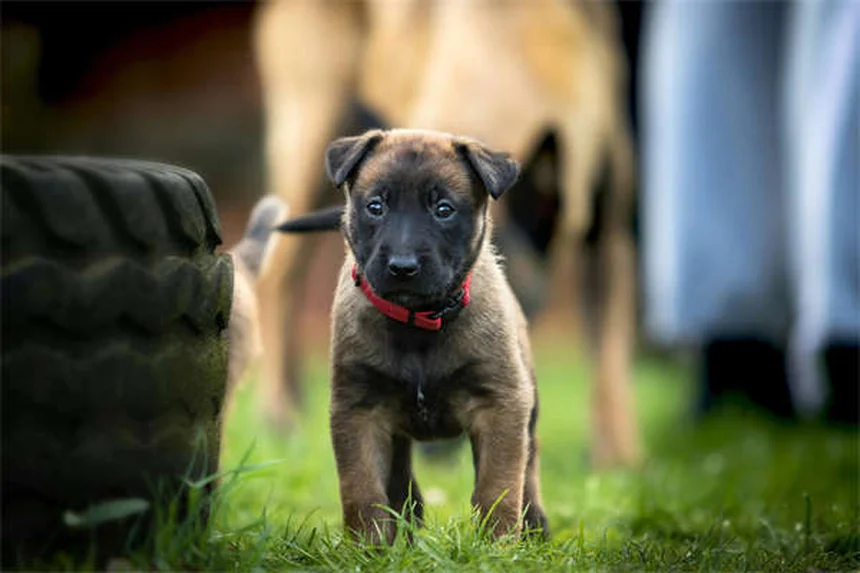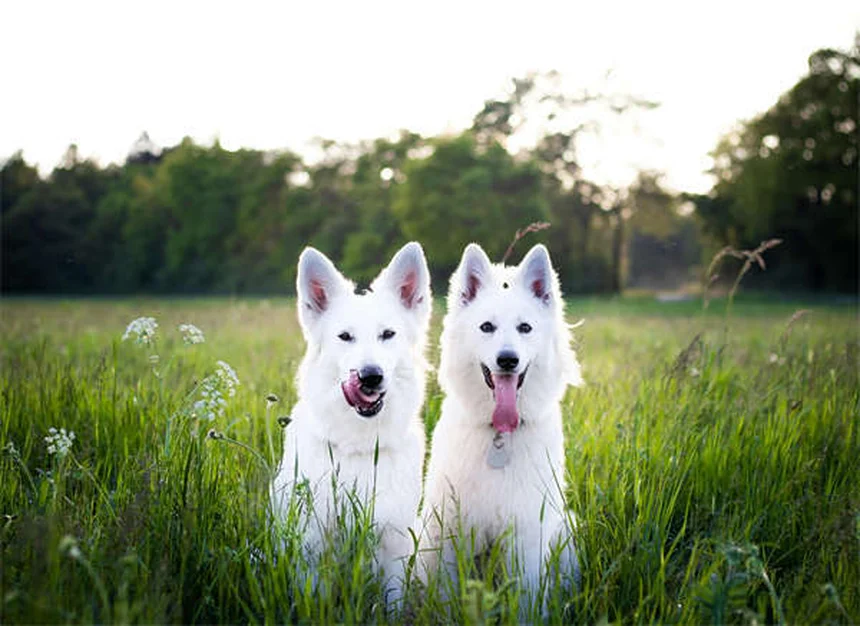Advertisement
Bringing home a new puppy? You'll need these 10 essential items to give your fur baby the best start in life! From vet care to chew toys, we've got you covered with everything required for raising a happy, healthy pup. The key is preparation - having the right supplies before your puppy arrives makes those first weeks so much smoother.Let me tell you, as someone who's raised multiple puppies, the difference between being prepared and scrambling last-minute is night and day. You want to focus on bonding with your new best friend, not running to the pet store every five minutes. That's why we've put together this comprehensive puppy essentials list based on expert advice from veterinarians and professional trainers.First things first - schedule that vet appointment! Puppies need frequent check-ups (every 3-4 weeks initially) for vaccines and parasite prevention. We'll walk you through choosing the perfect vet clinic and all the medical must-haves. Then we'll cover feeding essentials, training tools, safety gear, and those all-important toys to keep your pup entertained.Trust me, investing in quality puppy supplies now will save you headaches (and possibly your furniture) later. Whether you're getting a tiny Chihuahua or a future giant breed, these essentials will set you both up for success. Let's dive in!
E.g. :Fibrosarcoma in Dogs: Symptoms, Treatment & Survival Guide
- 1、Getting Your Home Ready for a Puppy
- 2、Feeding Your Growing Puppy
- 3、Essential Gear for Your Pup
- 4、Creating a Safe Space
- 5、Potty Training Essentials
- 6、Socializing Your Puppy
- 7、Keeping Your Pup Safe
- 8、Traveling With Your Puppy
- 9、Health and Grooming Basics
- 10、Understanding Your Puppy's Development Stages
- 11、Building a Strong Bond
- 12、Puppy-Proofing Your Lifestyle
- 13、Introducing Your Puppy to Other Pets
- 14、Seasonal Puppy Care
- 15、Technology for Puppy Parents
- 16、FAQs
Getting Your Home Ready for a Puppy
Why You Need a Vet Before Bringing Puppy Home
Let me tell you something - finding the right vet is like choosing a pediatrician for your human baby. You want someone who gets your puppy's needs and makes those early visits less stressful for both of you.
Here's a fun fact: Puppies need vet visits every 3-4 weeks initially. That's more often than most people visit their dentist! Dr. Hunter, a veterinary expert, emphasizes that these first visits are crucial even for puppies from healthy moms. We're talking vaccines, parasite checks, and setting up a health baseline - the building blocks for your pup's future.
Choosing the Perfect Vet
Ever wonder what makes a great vet clinic? Let me break it down for you:
| Factor | Why It Matters |
|---|---|
| Location | You don't want to drive an hour for routine care |
| Services | Look for dental care, nutrition advice, and surgery options |
| Experience | Find someone who knows your breed's quirks |
| Clinic Setup | Separate waiting areas reduce stress for pets |
Pro tip: Ask if you can go into the exam room with your pup. Some clinics still do curbside service, which might not be ideal for those first bonding moments.
Feeding Your Growing Puppy
 Photos provided by pixabay
Photos provided by pixabay
Picking the Right Food
Did you know puppy food isn't one-size-fits-all? That bag with the cute puppy picture might not be right for your specific dog. Here's what you need to check:
First, look for the AAFCO statement on the label - it should say "for growth" or "all life stages." Second, consider your pup's adult size. If they'll be over 50 pounds, they'll need large-breed formula to support their joints.
Treats That Train and Nourish
Who doesn't love rewarding good behavior? But here's the thing - those training treats add up fast. Joy, a professional dog trainer, recommends small, breakable treats so you can reward often without overfeeding.
Remember this golden rule: Treats should make up less than 10% of daily calories. That's like us having just one cookie after dinner - tough, but necessary!
Essential Gear for Your Pup
Bowls for Home and Adventure
Picture this: You're on a hike with your pup and they're panting like they just ran a marathon. That's when a portable water bowl saves the day.
For home, get a shallow bowl with a non-slip base. Puppies are messy drinkers - trust me, you'll thank me later when you're not mopping up puddles every hour.
 Photos provided by pixabay
Photos provided by pixabay
Picking the Right Food
Why do puppies need toys? Simple - a bored puppy becomes a destructive puppy. Mental stimulation is just as important as physical exercise.
Try different textures and sounds - crinkly toys, squeakers, even frozen Kongs with peanut butter (xylitol-free!). But watch them closely - some pups think stuffing is a gourmet snack!
Creating a Safe Space
Crates That Grow With Your Pup
Here's a question: What's better than buying a new crate every few months? A crate with an adjustable divider that grows with your puppy!
The MidWest iCrate is my top pick - it's collapsible for travel and has a leak-proof tray. Just remember: The crate should only be big enough for your pup to stand, turn around, and lie down comfortably.
Beds That Last Through Puppyhood
Puppy beds face three enemies: teeth, accidents, and rapid growth. Choose wisely - you want something durable, washable, and appropriately sized.
For large breeds, the Big Barker is fantastic - it even has a machine-washable cover. But whatever you choose, make sure it's in a quiet spot where your pup can truly relax.
Potty Training Essentials
 Photos provided by pixabay
Photos provided by pixabay
Picking the Right Food
Living in an apartment? Puppy pads can be a lifesaver. The trick is gradually moving them closer to the door until your pup learns to go outside.
And don't forget enzyme cleaner - because accidents happen, and regular cleaners just won't cut it for those stubborn puppy smells.
Socializing Your Puppy
The Golden Window for Socialization
Did you know puppies have a critical socialization period between 3-12 weeks? This is when they form lasting impressions about the world.
Start slow - let them observe new things from a distance. Then gradually introduce them to different people, pets, and environments. Remember: Positive experiences now mean a confident adult dog later.
Fun Socialization Activities
What's better than watching your pup make new friends? Try these ideas:
- Puppy kindergarten classes
- Short visits to dog-friendly stores
- Playdates with vaccinated dogs
- Scent walks in new neighborhoods
Just don't rush it - forcing interactions can backfire. Let your pup set the pace!
Keeping Your Pup Safe
ID Tags and Microchips
Here's a scary thought: What if your puppy gets lost? That's why identification is non-negotiable.
Tags are great, but collars can fall off. A microchip is permanent insurance - it's about the size of a grain of rice and can reunite you with your pup even if they lose their collar.
Puppy-Proofing Your Home
You know how toddlers get into everything? Puppies are worse - they can reach higher and chew harder! Get down on your hands and knees to see hazards at puppy level.
Secure electrical cords, move toxic plants, and keep shoes out of reach. Because to a puppy, your favorite sneakers look like gourmet chew toys!
Traveling With Your Puppy
Car Safety for Pups
Ever seen a puppy try to climb into the driver's lap at 60 mph? Not ideal. A crash-tested harness or travel crate keeps everyone safe.
Start with short trips to fun places so your pup associates car rides with positive experiences. And never leave them alone in a hot car - it's dangerous and illegal in many states.
Packing List for Puppy Adventures
What's in my go-bag for puppy outings? Let me share:
- Collapsible water bowl
- Extra leash and collar
- Puppy waste bags
- Favorite toy and treats
- First aid supplies
Pro tip: Keep a spare set in your car - you'll be amazed how often you need it!
Health and Grooming Basics
Starting a Grooming Routine
Why wait until your pup is dirty to introduce grooming? Start handling their paws, ears, and mouth early so vet visits and nail trims are less stressful.
Use positive reinforcement - treats and praise make grooming something your pup enjoys rather than fears. And choose the right tools for your breed's coat type.
Recognizing Early Health Signs
How can you tell if your puppy isn't feeling well? Watch for changes in appetite, energy levels, or bathroom habits.
Puppies can go downhill fast, so don't wait to call the vet if something seems off. It's always better to be safe than sorry when it comes to your furry family member!
Understanding Your Puppy's Development Stages
The Rapid Growth Phase
You wouldn't believe how fast puppies grow! In just the first six months, your little furball might gain 50 times their birth weight. That's like a human baby growing to the size of a small car in half a year!
Different breeds hit milestones at different paces. While small breeds mature quickly, large breeds keep growing for up to two years. I always tell new puppy parents to take weekly photos - you'll be amazed at the changes when you look back!
Teething Troubles
Ever wonder why your puppy chews everything in sight? Between 3-6 months, they're losing baby teeth and getting adult ones - and it hurts! Frozen washcloths or special teething toys can provide relief.
Here's a fun fact: Puppies have 28 baby teeth but end up with 42 adult teeth. That's a whole lot of chewing power coming in! Keep an eye out for those tiny teeth falling out - they often swallow them, but sometimes you'll find them around the house.
Building a Strong Bond
The Power of Positive Reinforcement
Why does your puppy respond better to treats than scolding? Science shows positive reinforcement creates stronger, longer-lasting behaviors. When you reward good behavior immediately, your pup's brain makes the connection faster.
I've seen miracles happen with simple clicker training. That little "click" sound marks the exact moment your pup does something right, followed by a tasty reward. Before you know it, you'll have a well-mannered companion who's eager to please!
Reading Your Puppy's Body Language
Did you know a wagging tail doesn't always mean happiness? Puppy communication is more complex than we think. Here's a quick guide to common signals:
| Signal | What It Means |
|---|---|
| Tail wagging low and slow | Unsure or nervous |
| Yawning when not tired | Stress or discomfort |
| Play bow (front down, rear up) | Wanting to play |
| Licking lips when not eating | Anxiety or submission |
Spend time just observing your pup - you'll start recognizing their unique ways of communicating with you!
Puppy-Proofing Your Lifestyle
Adjusting Your Schedule
How many times have you heard "puppies are like babies"? Well, here's the truth - they're actually more demanding! Young puppies can't hold their bladder for more than a few hours, meaning midnight potty breaks are inevitable.
I recommend new puppy parents take at least a few days off work to establish routines. Puppies thrive on consistency - regular feeding, play, and potty times help them feel secure. And don't forget to puppy-proof your Zoom calls - those little guys have perfect timing for barking during important meetings!
Financial Considerations
Ever wonder why they say "free puppies" are the most expensive? First-year costs can easily reach $2,000-$4,000 between vet visits, supplies, training, and unexpected emergencies.
Here's a breakdown of typical first-year expenses:
- Initial vet exams and vaccines: $200-$400
- Spay/neuter surgery: $200-$500
- Quality food: $300-$600
- Training classes: $100-$300
- Supplies (crate, bed, toys): $200-$500
Setting up a puppy emergency fund is one of the smartest things you can do. Trust me, you'll sleep better knowing you're prepared for anything!
Introducing Your Puppy to Other Pets
Dog-to-Dog Introductions
What's the best way to introduce your new puppy to your resident dog? Neutral territory is key. Parks or quiet streets work better than your home, where the older dog might feel territorial.
Keep initial meetings short and positive. Watch for relaxed body language - loose, wiggly movements are good, while stiff postures signal tension. And always supervise play - puppies don't always recognize when older dogs have had enough!
Puppies and Cats
Can puppies and cats really get along? Absolutely! The secret is giving your cat escape routes and safe spaces. Tall cat trees and baby gates with cat doors allow your feline friend to observe from a distance.
Never force interactions - let your cat approach when ready. Some cats will never be best friends with the puppy, but most learn to coexist peacefully. Just remember to keep puppy's enthusiasm in check - those wagging tails can be overwhelming for cats!
Seasonal Puppy Care
Summer Safety Tips
Did you know pavement can burn puppy paws in just minutes? Test surfaces with your hand - if it's too hot for you, it's too hot for them. Early morning or evening walks are safest in summer.
Puppies overheat faster than adult dogs. Watch for excessive panting, bright red gums, or lethargy - these are signs of heatstroke. Always carry water and take frequent breaks in the shade. And please, never shave double-coated breeds - their fur actually insulates against heat!
Winter Weather Considerations
How cold is too cold for puppy walks? If it's below freezing, limit outdoor time. Short-haired breeds might need sweaters, and all puppies benefit from paw protection on icy sidewalks.
Watch for signs of discomfort - lifting paws, shivering, or reluctance to walk. After outings, wipe paws to remove salt and antifreeze, which can be toxic if licked off. And remember, puppies lose body heat faster than adults - keep indoor play sessions extra fun when it's freezing outside!
Technology for Puppy Parents
Helpful Apps
Wouldn't it be great to track your puppy's potty breaks and meals? Apps like Puppr and DogLog make it easy to spot patterns and share info with pet sitters or family members.
My personal favorite is the 11pets app - it reminds me about vaccine schedules, flea treatments, and even when to trim nails. Some apps even connect you with trainers for virtual consultations when you hit a training roadblock!
Smart Gadgets
Ever wish you could check on your puppy while at work? Pet cameras have come a long way! Many now feature treat dispensers, two-way audio, and even laser pointers for interactive play.
For food-motivated pups, automatic feeders can maintain consistent meal times. Just be sure to transition slowly - some puppies get nervous about the whirring sounds at first. And always have a backup plan in case of power outages!
E.g. :new puppy supply list! : r/puppy101
FAQs
Q: What are the absolute must-have items for a new puppy?
A: The absolute essentials every new puppy parent needs include: a vet-approved puppy food, sturdy food and water bowls, a properly sized crate, comfortable bedding, chew toys, training treats, collar with ID tags, leash, puppy pads (if you're not able to take them outside frequently), and grooming supplies. Don't forget to puppy-proof your home by securing electrical cords and removing toxic plants! These basics will help you through those critical first weeks as you establish routines for feeding, potty training, and sleep.
Q: How soon should I take my new puppy to the vet?
A: Schedule that first vet visit within 48 hours of bringing your puppy home, even if they seem perfectly healthy. Puppies need a series of vaccinations starting at 6-8 weeks old, plus parasite checks and preventative care. Your vet will create a customized schedule - typically visits every 3-4 weeks until about 16 weeks old. This early relationship with your vet is crucial for catching potential health issues and getting professional advice on nutrition, training, and socialization.
Q: What type of food is best for puppies?
A: Look for high-quality puppy food specifically formulated for your dog's expected adult size. Large breed puppies need special nutrition to support their growing joints. The food should have an AAFCO statement for "growth" or "all life stages." Your vet can recommend the best options based on your puppy's breed, age, and health status. Remember to transition foods gradually over 7-10 days to avoid stomach upset, and stick to scheduled feedings rather than free-feeding.
Q: How can I make crate training easier for my puppy?
A: The secret to successful crate training is making it a positive experience. Start with short periods in the crate with the door open, using treats and praise to create happy associations. Choose a crate just big enough for your pup to stand, turn around, and lie down comfortably - too much space encourages potty accidents. Add comfortable bedding and safe chew toys. Never use the crate for punishment. Gradually increase crate time, always making sure your puppy has had potty breaks first. Most puppies adapt within a few weeks with consistent, positive training.
Q: What's the best way to socialize a new puppy?
A: Start socialization early but safely - the critical window is 3-12 weeks old. After initial vaccinations, expose your puppy to various people, animals, sounds, and environments in controlled, positive ways. Puppy kindergarten classes are fantastic for safe interaction with other dogs. Carry small treats to reward calm behavior during new experiences. Avoid overwhelming your pup - go at their pace and keep sessions short. Proper socialization prevents fearfulness and behavior problems later in life, creating a confident, well-adjusted adult dog.

